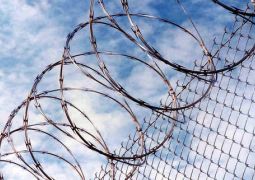
A joint oversight visit by the Portfolio Committee on Public Works and Infrastructure, Portfolio Committee on Home Affairs, and the Standing Committee on Public Accounts (Scopa) has discovered that the recently constructed Beitbridge border fence between Zimbabwe and South Africa is tantamount to fruitless expenditure as the fence was not fit for purpose. The committees visited the border to assess the quality of work done with the erection of the fence.
From far, the shiny fence is impressive and overbearing, but from close-up the scale of the substandard work is astonishing. To gain illegal entry into South Africa one doesn’t even need tools, but can use their bare hands to cut the fence.
What left the committees even more baffled was that a fence that was constructed in 1983 was in a much better condition than its recent companion. The committees were unanimous that the fact that a 37-year-old secondary fence that was decommissioned in 1994 was is a better physical condition than five-month-old fence is demonstration of the substandard quality of the fence. “The most practical and cost-effective measure would have been to refurbish the decommissioned fence,” said Mr Mkhuleko Hlengwa, the Chairperson of Scopa.
The fence, which was procured as part of the intervention to fight the spread of Covid-19 has been cut in over 100 places since construction. This means that it is not achieving its role of being a deterrent against illegal crossing of the border. The committees were also critical of the fact that the fence was not constructed to specifications, something which exacerbated the unsuitability of the fence.
Following the visit, the committees called for effective consequence management against those that have been implicated in the wrongdoing around the project. “Regarding the 14 implicated officials, the committees were of the firm view that due process must be followed, which will hopefully culminate in effective consequence management,” said Ms Nolitha Ntobongwana, the Chairperson of the Portfolio Committee on Public Works and Infrastructure.
An issue of concern for the committees remained the prescriptive directive written by the Minister of Public Works, and they are awaiting a comprehensive report by the department on the nature, circumstances and motivation of the directive.
The committees have also called for the Special Investigating Unit to initiate a process to recover lost resources. This followed the information that for the scale and scope of the project, the state could have paid about R17 million less than was paid for the current project.
The committees have individually and jointly committed themselves to heighten their focus over the project, to ensure that effective consequence management takes place and that the state recovers losses to the fiscus.
By Malatswa Molepo
7 September 2020

